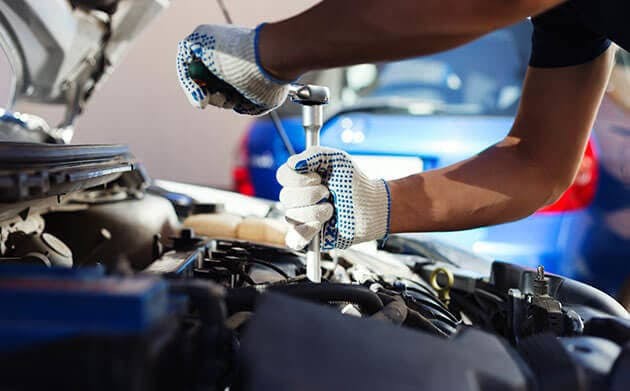Firing the parts cannon is a common car repair mistake that can cost you time, money, and effort. It can also cause more problems for your car and yourself.
Car repairs can be a daunting and expensive task for many car owners. Whether you are a DIY enthusiast or a professional mechanic, you want to make sure that you fix your car problems correctly and efficiently. However, there is one common car repair mistake that can waste your time, money, and effort: firing the parts cannon.
What Is Firing the Parts Cannon?
Firing the parts cannon is a term that describes the practice of throwing parts at the problem without doing any diagnostics. This means that instead of finding out the root cause of the problem, you just replace parts based on assumptions, guesses, or recommendations from the internet or other sources.
For example, if your car has a check engine light on, you might use a code reader to get a diagnostic trouble code (DTC). However, a DTC does not tell you exactly what part is bad or what is causing the problem. It only tells you what system or circuit is malfunctioning. A DTC can have multiple possible causes and solutions, and some of them may not even involve replacing any parts.
If you fire the parts cannon and replace a part based on the DTC without performing any tests or checks, you might end up wasting money on a part that you did not need, or worse, creating more problems for your car. For instance, if you replace an oxygen sensor based on a DTC without checking the wiring, connectors, or vacuum leaks, you might damage the new sensor or cause other issues with the fuel system.
Read Also: Cracking the Code: Expert Tips for Distinguishing Fake and Genuine Spare Parts
Why Is Firing the Parts Cannon a Bad Idea?
Firing the parts cannon is a bad idea for several reasons:
- - It is costly: Replacing parts without knowing if they are faulty or not can rack up your repair bill quickly. You might end up buying parts that are expensive, unnecessary, or incompatible with your car. You might also have to pay for labor costs if you hire a mechanic to do the job for you.
- - It is ineffective: Replacing parts without fixing the underlying problem can leave your car in the same or worse condition than before. You might not solve the original problem, or you might create new problems by installing faulty or wrong parts. You might also void your warranty or damage other components of your car.
- - It is risky: Replacing parts without proper diagnosis can be dangerous for your car and yourself. You might install parts that are not suitable for your car model, make, or year. You might also install parts that are defective, counterfeit, or recalled. You might also expose yourself to electrical shocks, burns, or injuries by working on your car without proper tools or safety precautions.
Read Also: Brake System Inspection: Comprehensive Step-by-Step Guide
How to Avoid Firing the Parts Cannon?
The best way to avoid firing the parts cannon is to do proper diagnosis before replacing any parts. This means that you should use your eyes and brain to determine what is wrong with your car, and not just blindly change parts based on codes or suggestions.
To do proper diagnosis, you should follow these steps:
- - Identify the problem: The first step is to identify the problem that you are trying to fix. You should observe and describe the symptoms of the problem, such as noises, smells, leaks, vibrations, performance issues, warning lights, etc. You should also note when and how often the problem occurs, and under what conditions.
- - Research the problem : The next step is to research the possible causes and solutions for the problem. You can use various sources of information, such as your owner's manual, repair manuals, online forums, blogs, , videos, etc. However, you should be careful not to trust everything you read or watch online, as some sources may be inaccurate, biased, outdated, or fraudulent. You should always verify and cross-check the information from multiple sources before applying it to your car.
- - Test and verify: The final step is to test and verify the cause and solution for the problem. You should use appropriate tools and methods to check and measure various components of your car, such as sensors, wires, connectors, fuses, relays, etc. You should also perform tests under different scenarios and conditions to eliminate any other possible factors. You should only replace a part if you have confirmed that it is faulty or damaged beyond repair.
Conclusion
To avoid firing the parts cannon, you should do proper diagnosis before replacing any parts. You should use your eyes and brain to determine what is wrong with your car, and not just blindly change parts based on codes or suggestions.
You should also use reliable sources of information and appropriate tools and methods to test a by and verify the cause and solution for the problem. By doing so, you can fix your car problems correctly and efficiently.

Comments (0)
Please login to join the discussion
Be the first to comment on this article!
Share your thoughts and start the discussion